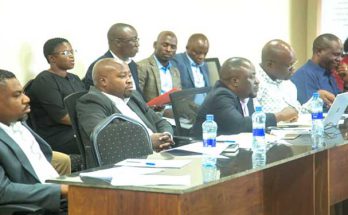 According to Anglo American, some mines in the next decade will run without humans and instead rely on robots, virtual models, and sensors.
According to Anglo American, some mines in the next decade will run without humans and instead rely on robots, virtual models, and sensors.
Anglo is betting on technology, such as computerized drills with “chiseling ability as good as a human” to increase productivity, cut costs and reduce environmental impact. According to Tony O’Neill, technical director at Anglo “The industry that everybody currently knows will be unrecognizable” With mining processes automated, “the employee of the future” will only need to focus on managing the company’s relations with governments and communities that live near its mines.
In underground mining, robots, or software that can execute instructions, will be increasingly important. With commercial application just five to seven years away, small and self-learning, the technology requires less infrastructure than current methods, and
Anglo, being the operator of some of the world’s most valuable copper deposits and employs 87 000 workers from South Africa to Chile,
is not the only one to invest in automation. In Australia’s Pilbara iron-ore region, BHP Billiton has begun work aimed at implementing autonomous trains along its 1 300-kilometer rail network.
Barrick Gold is already working on the gold mining industry’s most ambitious experiment to modernize digging, using thousands of sensors at and around the Cortez mine in Nevada. Other technologies being used are real-time, virtual models of physical processes to prevent problems before they occur and can be deployed to monitor the mine, processing, and distribution. Borrowed from the aerospace industry these systems, could increase productivity by about 20 percent and lower costs by 15%. The company plans to use “dry water” for cooling and other processes that use lots of liquid. It also aims to reduce mine waste, which would make tailings dams unnecessary.



